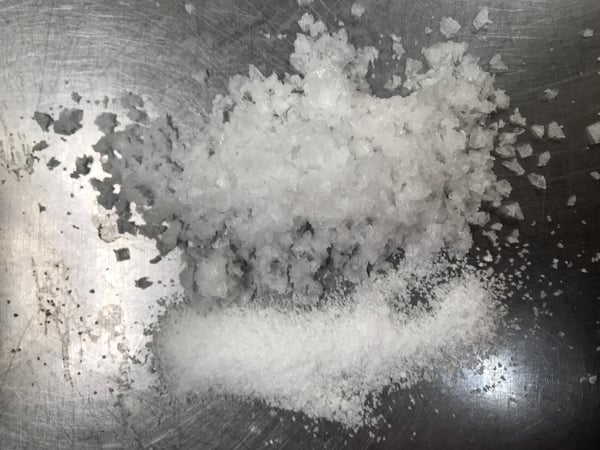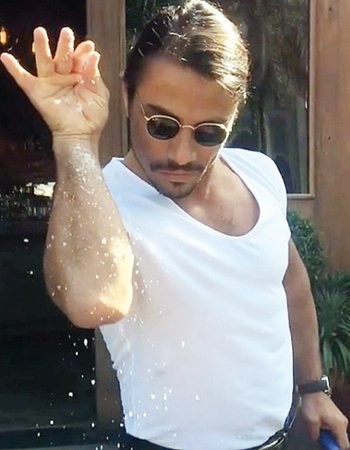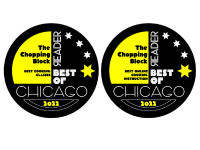Pink, black, grey, iodized, rock, coarse, fine and sea. These are all words you can use to describe salt. Feeling overwhelmed by your choices? I don’t blame you! From color, grit, and mineral contact, not all salts are created equal and not all salts are all purpose.

Grit
The finer the salt, the saltier your food may end up tasting if you aren’t careful! If you’re a precise measurer when you cook, be mindful of the grit of salt a recipe calls for and always taste as you go. The smaller and more uniform the pieces of salt are, the more you can physically fit into a tablespoon.
Coarser salts add a nice crunch to food when used as a finishing salt, but aren’t a good option for baking as you need a more uniform distribution of ingredients. For example, a coarser sea salt would be lovely sprinkled on avocado toast or to season a steak, but wouldn’t be the best option for adding to cookie or cake batter.
Mineral Content
During our cooking classes, we get a lot of questions about what I’d call the more trendy salts. These include pink Himalayan salt, French grey salt and black lava salts. All of these salts are beautiful looking and each offer a slightly different flavor and color depending on their mineral content. Black lava salt has a mild sulfuric taste that can make for a nice addition in a tofu scramble or other vegan egg replacements. These salts tend to be a little more expensive than your run of the mill kosher salt, so use them in applications where they can shine! Don’t salt your pasta water with black lava salt, but rather use these salts as a finishing ingredient so you really taste them. Many nutritionalists say that these salts are better for you due to the mineral content.
Iodized Salt and The Fear of Overseasoning
Iodized salt is salt that has been processed to remove all the minerals and is then fortified with iododine. Iodine is a necessary nutrient, but there are many other sources of iodine-rich foods like yogurt, beans and even Himalayan sea salt. Why many chefs advice home cooks to throw out their iodized salt is because of its chemically flavor that tends to build on the palate, leaving the eater feeling like their food has been overseasoned.
What to Do with this Information
Ultimately you should use whatever salt fits your personal taste preferences and budget. But having a few different grits and types of sea salt isn’t too expensive of an investment. Salt is simple, but it’s an important and vital part of cooking! Hopefully now you feel inspired to experiment and try something new! What’s your favorite salt to cook with and why? Let me know in the comments, and whether you've perfected Salt Bae's move!

Our chefs especially love the Maldon Sea Salt we carry at The Chopping Block. It's extracted from the sea, plain and natural with nothing added, it dissolves easy in cold water so it is nice to use in a brine, and it’s easy to work with. This means that you do not need a grinder for it, you just work it with your fingers as you sprinkle it on your food. It retains moisture very well, so you could let it sit out on a nice dish or container on your kitchen counter.
If you want to learn more about the nuances of seasonings our popular Cooking Lab: Flavor Dynamics will get you up to speed. We just opened up another session in March at Lincoln Square, so grab a seat now!











